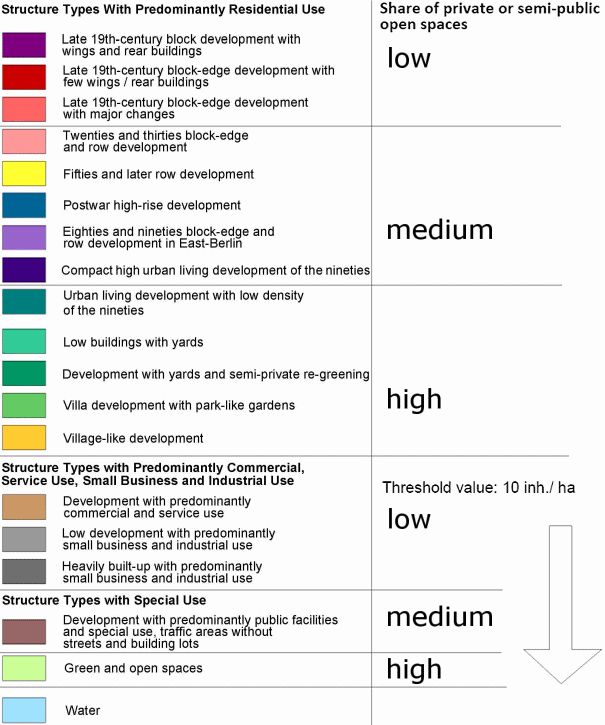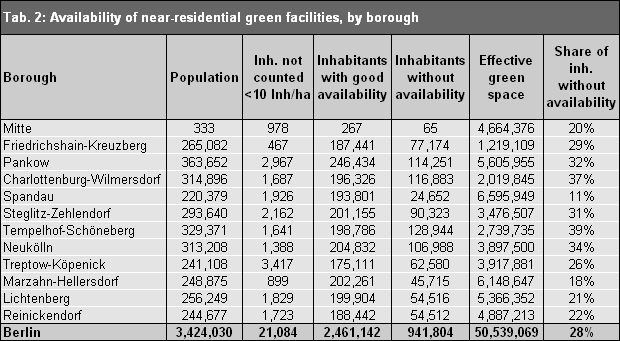The table shows the populations of the boroughs of Berlin as used for the calculation process; their total populations; the residents not considered, i.e., in the blocks below the threshold of 10 inh./ha; those with good availabilty of green space; and those with no available green space.
In the borough of Spandau, only 11 % of the population have not no available near-residential green space, whereas 39 % of residents in the borough of Tempelhof-Schöneberg live outside the intake areas of any green spaces.
Inner City Areas
The map shows the detailed situation of availability of green space, by block. As is to be expected, an especially poor situation exists with respect of the availability of green space in the inner city areas with imperial-era block development.
Generally, closed block development prevails in these inner city neighbourhoods. Core areas characterized by a low level of private and/or semi-public open spaces also have high structural density. In these areas, serious open-space deficits exist, both in the private and in the public sector.
In the inner city, small green spaces isolated from one another prevail. They are often designed as city squares, and can thus come nowhere near to covering the need for near-residential green space caused by high population density.
The methodological change undertaken since the 2009 Edition to no longer classify major roads as impassable barriers, has led to an upgrading of many downtown areas close to large parks (examples: the residential area at the Hasenheide Public Park, the Treptow Park, the Viktoria Park or the Weissensee Park).
The shut-down of Tempelhof Airport and its tranformation to a green facility for the adjacent residential blocks has provided an upgrade of green space availability in that area, compared to the 2009 Edition.
Outlying Boroughs
In the outlying boroughs, the situation is generally better. The available green spaces are frequently large; in some cases, forest areas are directly adjacent to residential areas. Due to the less dense development structure, the population density is obviously low.
As a rule, the level of private green space is relatively high in the outlying boroughs, because of the prevailing single-family and/or row house development, so that deficits in public open space are partially compensated.
The situation is different for the major residential estates at the outskirts of the city, which are characterized by tower high-rises or chains of high-rises. While in Marzahn and Hellersdorf, the open areas of the Wuhle valley and the Hönow chain of ponds largely provide availability of green space, considerable deficits exist in the Märkisches Viertel and Gropiusstadt areas. The shortage of public green spaces there means that an undersupply exits, despite large residential courtyards and connections to the Lübars Recreational Park and the Rudow Grove, respectively.


